- Top Employee Onboarding Software
- Why Use Employee Onboarding Software?
- Key Features of Effective Onboarding Software
- How To Choose The Right Onboarding Software?
- Which is the Best Onboarding Software?
- Frequently Asked Questions (FAQs)
- What Is Upskill And Reskill?
- Difference Between Reskilling And Upskilling
- Upskilling for Workplace Advancement
- Reskilling for Career Transformation
- Crafting Successful Upskill and Reskill Strategies
- Upskill And Reskill Strategizing: Things to Keep in Mind
- Measuring the Impact of Skill Development Initiatives
- Frequently Asked Questions
- What’s a Skill Gap?
- Employee Skill Gap Analysis: Why Do We Need It?
- How To Conduct Employee Skill Gap Analysis?
- Addressing Skill Gaps Through Training and Hiring
- Utilizing Skills Gap Analysis for Strategic Planning
- Leveraging Employee Skill Gap Analysis: Things To Keep In Mind
- Frequently Asked Questions
- Transformative Role of AI in Talent Acquisition
- Impact of AI on Business Recruiting
- Overcoming Challenges in AI-Driven Talent Acquisition
- Starting with AI in Talent Acquisition
- Future Landscape of AI in Talent Acquisition
- Frequently Asked Questions
- HR In The Hot Seat - Challenges With Evolving Workforce
- Mastering Effective HR Management: Tips For Overcoming Challenges
- Summing Up
- The Future of HR: Key Trends for 2024
- Skill-Based Hiring
- Prioritizing Employee Experience, Engagement & Well-being
- AI-Empowered Workforce Evolution and Its Impact
- Taking Diversity, Equity, and Inclusion Beyond Mandates
- Hybrid and Remote Work
- Embracing the Gig Economy and Blended Workforce
- Transparent HR Practices
- Climate Change Adaptation in HR Practices
- Leveraging HR Analytics for Data-Driven Decisions
- Continuous Learning & Development to Improve Productivity
- The Office Buzz in 2024
- Bottom Line - HR Operating Model Needs A Shift
- Importance and Impact of Recognizing Employee Birthdays
- Professional Birthday Wishes for Employees (All Experience Levels)
- Personalized Birthday Wishes for Employees in Different Roles
- Fun Birthday Wishes for Employees (with Templates)
- Birthday Wishes for Remote Employees
- Heartfelt Birthday Wishes for Employees
- Belated Birthday Wishes for Employees
- Simple & Sweet Birthday Wishes for Employees
- Celebrating Employee Birthdays: Ideas and Traditions
- Tips and Ideas for Sending Birthday Wishes to Employees
- Closing Thoughts
- Frequently Asked Questions
- What Is An Employee Referral?
- Benefits of Implementing Employee Referral Programs
- Setting Up an Effective Employee Referral Program
- Employee Referral Email
- Employee Referral Scheme
- Overcoming Challenges of Employee Referrals
- Companies with Best Employee Referral Programs
- Employee Referral Programs: Best Practices
- Closing Thoughts
- Frequently Asked Questions (FAQs)
- Importance of Team Building Activities
- Types of Team Building Activities
- Outdoor Team Building Activities for Employees
- Indoor Team Building Activities for Employees
- Easy Team Building Activities for Remote Employees
- Team Building Activities For New Employees (Icebreakers)
- Fun Team Building Activities for Different Goals
- To Boost Communication and Collaboration
- To Reduce Stress Levels and Promote Well-being
- Aligning Team Purpose and Values with Strategic Activities
- Final Remarks
- Frequently Asked Questions
- Importance of Employee Appreciation Quotes
- Work Appreciation Quotes for Employees
- Employee Appreciation Quotes for Hard Work Recognition
- Employee Appreciation Quotes for Teamwork and Collaboration
- Appreciation Quotes for Celebrating Employee Anniversaries and Milestones
- Employee Appreciation Quotes for Strong Work Ethics
- Employee Appreciation Quotes for Project & Goal Completion
- Employee Appreciation Quotes for Quality of Work
- Employee Appreciation Quotes for Creativity and Innovation
- Appreciation Quotes for Managers
- Peer-to-Peer Employee Appreciation Quotes
- Appreciation Quotes for Employees Leaving the Company
- Employee Appreciation Quotes for Thoughtful Gestures
- Funny Employee Appreciation Quotes
- Short Employee Appreciation Quotes
- Employee Appreciation Quotes for Different Roles
- Employee Appreciation Quotes for Senior Leadership
- Creative Ways to Use Employee Appreciation Quotes
- Summary
- Frequently Asked Questions (FAQs)
- What is Employee Satisfaction?
- Importance of Employee Satisfaction
- Objectives of Employee Satisfaction
- Employee Satisfaction vs. Employee Engagement
- Key Reasons for Employee Dissatisfaction
- Strategies for Improving Employee Satisfaction
- Ways to Measure Employee Satisfaction
- Best Practices for High Employee Satisfaction
- Final Remarks
- Frequently Asked Questions (FAQs)
- How to Craft Effective Employee Appraisal Comments
- Key Areas to Focus in Performance Review
- Comments On Hard Work & Dedication
- Assessing Interpersonal Skills
- Evaluating the Ability to Collaborate & Work in Teams
- Gauging Punctuality
- Commenting on Communication Style
- Reviewing Time Management and Productivity
- Leadership in Performance Appraisals
- Assessing Creativity & Innovation
- Evaluating Problem-Solving Abilities
- Recognizing Flexibility and Dependability in Reviews
- Employee Appraisal Comments for Different Roles
- Summary
- Frequently Asked Questions (FAQs)
- Employee Grievance Meaning
- Importance of Employee Grievance Process
- Types of Workplace Grievances
- Reasons for Employee Grievances
- Employee Grievance Procedure
- Steps in the Employee Grievance Handling Process
- Employee Grievance Form Example
- Final Remarks
- Frequently Asked Questions (FAQs)
- What is Company Culture?
- Importance of Company Culture
- Types of Company Culture
- Factors Contributing to Organizational Culture
- Assessing & Developing Corporate Culture
- Company Culture - It’s not just Perks or Feels
- Good Company Culture Examples
- Developing Company Culture: Best Practices
- Closing Thoughts
- Frequently Asked Questions (FAQs)
- What is Employee Empowerment?
- Benefits of Empowering Employees
- Employee Empowerment vs. Micromanagement
- Strategies for Effective Employee Empowerment
- Role of Managers in Fostering Empowerment
- Organizational Structure Supporting Empowerment
- Overcoming Barriers to Employee Empowerment
- Frequently Asked Questions (FAQs)
- What is Employer Branding?
- Importance of Employer Branding Strategy
- How to Build an Employer Branding Strategy?
- Strategies for Building a Strong Employer Brand
- How to Measure and Boost Your Employer Branding Success?
- Examples of Strong Employer Brand Strategy
- Best Practices for an Effective Employer Branding Strategy
- Closing Thoughts
- Frequently Asked Questions (FAQs)
- What are Employee Wellness Programs?
- Importance of Employee Wellness Programs
- Examples of Employee Wellness Programs
- Real-Life Examples of Corporate Wellness Programs
- Strategies for Encouraging Participation
- Supporting Diverse Employee Needs
- Creating Comprehensive Wellness Programs
- Measuring the Impact on Business and Employees
- Closing Thoughts
- Frequently Asked Questions (FAQs)
- What is Talent Management?
- Developing a Winning Talent Management Strategy
- Models and Frameworks
- Tips for Framing Effective Talent Management Strategy
- Looking Ahead: Recent Trends in Talent Management
- Frequently Asked Questions
- Role of AI in HR: Addressing Common Challenges
- Artificial Intelligence in HR Processes
- AI Tools for HR Functions
- How to Adopt AI in HR?
- Addressing Challenges of AI in HR
- Ethical and Responsible AI Use
- The Future of AI in HR
- Closing Thoughts
- Frequently Asked Questions
- What is Performance Management?
- Elements of Effective Performance Management
- Performance Management Cycle
- Differentiating Performance Management
- Benefits of Performance Management With Examples
- Challenges faced in Performance Management and their Solutions
- Future Trends in Performance Management
- Frequently Asked Questions
- Changing Role of HRM
- Changing Role Of HR Manager
- Technology and the Changing Role of HRM
- The Rise of AI and Machine Learning in HR
- Mobile Technology's Impact on HR Practices
- The Significance of People Analytics in HR
- Navigating the Future of HR Technology
- Final Remarks
- Frequently Asked Questions
- Compensation Management Meaning
- Compensation Types
- Breaking Down The Compensation Management Process
- HR Software for Compensation Management
- Current Trends in Compensation Management
- Frequently Asked Questions
- Defining Flexible Work Arrangements
- Flexible Working: Advantages for Businesses
- Challenges of Flexible Work Arrangements
- Crafting Flexible Working Practices
- Types Of Flexible Work Arrangements
- Comparing Flexible Work Arrangements
- Real-Life Examples of Flexible Work Arrangements
- Final Remarks
- Frequently Asked Questions
- Conflict Resolution Meaning
- Conflict Origins
- Tried & Tested Conflict Resolution Strategies
- Methods of Conflict Management at Workplaces
- Conflict Resolution Strategies: Top Management Tips
- Summary
- Frequently Asked Questions
- Career Development Meaning
- Career Development Plan for Employees
- Career Development in HRM: Growth Ideas For Employees
- Issues in Career Development and Their Solutions
- Closing Thoughts
- Frequently Asked Questions
- Understanding Compensation
- Exploring Benefits
- Difference between Compensation and Benefits
- Compensation & Benefits Structure
- Final Remarks
- Frequently Asked Questions
- Defining Recruitment in HR Practices
- Exploring Talent Acquisition in HR
- Understanding Talent Acquisition vs Recruitment
- When to Recruit or Acquire Talent
- Talent Acquisition vs Recruitment: Responsibilities
- From Recruitment To Talent Acquisition
- Closing Thoughts
- Frequently Asked Questions
- Work Culture Meaning
- Types of Work Cultures
- Components of Culture
- Best Work Culture Examples Set By Top Companies
- Creating a Positive Work Culture
- Closing Thoughts
- Frequently Asked Questions
- Defining Learning vs Development
- Importance of Learning and Development
- L&D Activities for Employees
- Choosing the Right L&D Activities
- Crafting an Effective L&D Strategies
- Aligning L&D Strategy with Business Goals
- Designing Engaging Learning Journeys
- Learning and Development Process: KPIs
- ROI in Learning and Development
- Emerging Trends in L&D
- Closing Thoughts
- Frequently Asked Questions
- What Is Leadership Development?
- Key Skills for Leaders
- How To Develop Leadership Skills in Organizations?
- What Is A Leadership Development Program?
- How To Develop A Leadership Development Program?
- Example of A Leadership Development Plan
- Benefits of Leadership Development Training
- Frequently Asked Questions
- Defining Diversity Training
- Importance of Diversity Training
- What are the Types of Diversity?
- Types of Diversity Training Methods
- Diversity Training Activities
- Choosing A Diversity Training Program
- How to Implement Diversity Initiatives
- Best Diversity Training Programs (Real-Life Examples)
- Improving the Effectiveness of Diversity Training
- Tracking and Evaluating the Results of DE&I Training Efforts
- Essential Elements for Successful Diversity Training
- Closing Thoughts
- Frequently Asked Questions
- Defining Occupational Health & Safety
- Evolution of Workplace Health and Safety
- Identifying Common Workplace Hazards
- Global Impact on Occupational Health & Safety
- Managing Employee Health and Safety Risks
- Occupational Health and Safety Problems
- Future of Occupational Health and Safety
- Frequently Asked Questions
- Employee Orientation Defined
- Employee Onboarding Explained
- Orientation and Onboarding: Understanding the Difference
- Importance of Orientation and Onboarding
- Crafting Comprehensive Integration Strategies
- Quick Tips for Orientation and Onboarding
- Frequently Asked Questions
- What is HR Metrics?
- Importance of HR Metrics
- HR Metrics Examples in Recruitment
- HR Metrics Examples in Employee Retention
- HR Metrics Examples in Revenue
- Other Common HR Metrics
- Soft HR Metrics Example
- HR Metrics Formula
- Utilizing HR Metrics Effectively
- Future of HR Metrics
- Summary
- Frequently Asked Questions
- Defining Decision Making Process
- Key Concepts In Decision Making
- Decision Making & Problem Solving
- Tips For Improving Decision Making Skills
- Selected Practice Questions & Answers
- Conclusion
- Frequently Asked Questions (FAQs)
- A case(s) of miscommunication
- The devil is in the (resume) details
- One for the complaints!
- What is an Exit Interview?
- Benefits of Exit Interviews to an Organization
- How to Conduct Exit Interviews?
- Exit Interview: Sample Questions to Ask
- Overcoming Challenges of Exit Interviews
- Exit Interviews: Best Practices
- Closing Thoughts
- Frequently Asked Questions
- Technology in the Workplace
- Benefits of Tech Integration
- Technology in the Workplace: Key Functions
- How Technology Normalized Remote Work
- Workplace Technology: Top Tools and Software
- Steps for Effective Technology Implementation
- Overcoming Tech Implementation Challenges
- Ethical Considerations in Tech Use
- Keeping Pace with Tech Trends
- Closing Thoughts
- Frequently Asked Questions
- What is Ethical Leadership?
- Principles of Ethical Leadership
- Difference between Ethics and Integrity
- Importance of Ethical Leadership
- Ethical Leadership in Practice
- Overcoming Challenges
- Frequently Asked Questions
- Embracing Change Management
- Mastering People Analytics
- Enhancing Stakeholder Relationships
- Navigating Diversity, Equity & Inclusion
- Upholding Ethics and Data Privacy
- Developing Critical Thinking
- Advancing Negotiation Techniques
- Fostering Inter-departmental Collaboration
- Building Resilience in HR
- Frequently Asked Questions
- What is Mental Health?
- Benefits of a Mentally Healthy Workforce
- Prioritising Mental Health: Creating a Culture of Support
- Final Remarks
- Frequently Asked Questions
- Gen Z vs Millennials - What is the difference?
- Retain and Engage Gen Z Employees: Need and Strategies
- Strategies to Retain and Engage Gen Z Employees
- Rethinking Requirements
- Final Remarks
- Frequently Asked Questions
- Understanding Millennial Leadership Needs
- Key Leadership Skills for Millennials
- How To Develop Millennial Into Leaders
- Additional Strategies to Develop Leaders
- Learning Preferences of Millennials
- Benefits of Investing in Millennial Leaders
- Closing Thoughts
- Frequently Asked Questions
- Understanding Fluff
- Examples of Interview Fluff
- Identifying Interview Fluff
- Addressing Interview Fluff
- Seeing Through the Fluff
- Frequently Asked Questions
- What is the Gender Pay Gap?
- Is the Gender Pay Gap Real?
- Factors Affecting the Gender Pay Gap
- How Age Impacts Women’s Earnings
- The ‘Motherhood Penalty’
- Education's Role in Wage Differences
- Racial and Ethnic Disparities in Pay
- Closing the Gender Gap
- Frequently Asked Questions
- Top Weirdest Late-To-The-Office Excuses
- The Fine Art of Balancing Wit and Wisdom in HR
- Understanding Social Media Recruiting
- Crafting Your Social Media Recruitment Strategy
- Implementing Your Strategy Effectively
- Popular Platforms for Recruitment
- Navigating the Downsides of Social Media Recruiting
- Measuring Success and Adjusting Strategy
- Summary
- Frequently Asked Questions
- Who Is A High Potential (HIPO) Employee?
- Characteristics of A High Potential (HIPO) Employee
- High Potential Employee Identification
- Grooming High Potential Employees
- Why High Potential Employees Leave
- How Do You Retain High Potential Employees?
- High Potential Employee Development: Best Practices
- Closing Thoughts
- Frequently Asked Questions
- What is Digital Fluency?
- Why Digital Fluency Matters?
- Difference between Digital Literacy and Digital Fluency
- Key Components of Digital Fluency
- Achieving Digital Fluency
- Overcoming Challenges
- Future of Workforce Digital Fluency
- Frequently Asked Questions
- What is Loud Quitting?
- Pros and Cons of Loud Quitting
- Reasons Behind the Trend
- Analyzing the Impact
- How HR Can Navigate the Loud Quitting Uproar
- Preventive Strategies
- Closing Thoughts
- Frequently Asked Questions
- Defining Emotional Intelligence in HR
- Why Emotional Intelligence Matters for HR Leaders
- How To Build Emotional Intelligence in HR
- Integrating EQ into HR Practices
- Impact of EQ on Company Culture
- Emotional Intelligence in HR: Major Challenges
- Final Remarks
- Frequently Asked Questions
- Understanding Internal Job Posting
- Internal Job Posting: Pros and Cons
- The Internal Job Posting Process
- Writing Effective Ads for Internal Job Posting
- Strategies for Success of Internal Job Posting
- Summary
- Frequently Asked Questions
- Understanding Workplace Bias
- Common Types of Bias in HR
- Closing Thoughts
- Frequently Asked Questions
- What is a Dry Promotion?
- Dry Promotion: Pros and Cons for Companies
- Impact of Dry Promotion on Employee Retention
- Preventing Talent Loss After Dry Promotions
- Closing Thoughts
- Frequently Asked Questions
- What Is A Stay Interview?
- Importance Of Stay Interviews
- Benefits And Challenges Of Stay Interviews
- Planning And Conducting Stay Interviews
- Stay Interviews: 20 Sample Questions To Ask
- Best Practices For Effective Stay Interviews
- Summary
- Frequently Asked Questions
- Who Is A Boomerang Employee?
- Reasons For Returning
- Benefits Of Hiring Boomerang Employees
- Challenges Of Rehiring
- Interviewing Boomerang Candidates: Sample Questions
- Enhancing The Hiring Process
- Making Informed Decisions
- Final Remarks
- Frequently Asked Questions
- Talent Pipeline Meaning
- Significance of Talent Pipelines
- Advantages of a Talent Pipeline
- Building a Talent Pipeline
- Maintaining a Talent Pipeline
- Attracting Top Talent
- Implementing the Strategy
- Frequently Asked Questions
- What is Micromanagement?
- Recognizing Micromanagement
- Leadership versus Micromanagement
- Keeping Micromanagement in Check
- Beyond Micromanagement
- Summing Up
- Frequently Asked Questions
- Recognizing Signs Of A Bad Hire
- Understanding The Impact On Teams
- Dealing With A Bad Hire
- Preventing Future Bad Hires
- Closing Thoughts
- Frequently Asked Questions
- Defining Neurodiversity
- Importance of Neurodiversity in the Workplace
- Moving Towards Inclusive Environments
- Final Remarks
- Frequently Asked Questions
- Understanding the Generation Gap
- Multigenerational Workforce: Debunking Stereotypes
- Strategies for Bridging the Gap
- Benefits of a Multigenerational Workforce
- Final Remarks
- Frequently Asked Questions
- Defining Productivity Theatre: All Show, No Go
- 5 Key Drivers of Fake Productivity
- Solutions to Combat Productivity Theatre
- Summary
- Frequently Asked Questions
- Defining Grumpy Staying
- Why do Grumpy Stayers not Leave?
- Recognizing the Signs
- Exploring the Causes
- Understanding the Impact
- Addressing the Issue
- Taking Action: Addressing Grumpiness with Empathy
- After the Conversation
- When Grumpy Staying Continues
- Closing Thoughts
- Frequently Asked Questions
- The Rationale Behind Office Peacocking
- Impact on Company Culture
- Impact on Employees
- Case Studies: Examples of Office Peacocking
- The Downside: Potential Pitfalls of Office Peacocking
- Practical Tips for Implementing Office Peacocking
- Frequently Asked Questions
- 13 Common Mistakes Young Managers Make
- Strategies To Avoid Mistakes (Individual Growth)
- How Young Managers Can Boost Teamwork
- Learning From Errors
- Summary
- Frequently Asked Questions
- Understanding Great Regret - What causes the shift shock?
- Impact of Great Regret
- How can HR help make the situation better?
- Closing Thoughts
- Frequently Asked Questions
- Understanding the HR Budget
- Key Components of an HR Budget
- Preparing an HR Budget Step-by-Step
- Importance of HR Budgeting in Management
- Final Remarks
- Frequently Asked Questions
- What are Pre-Employment Assessments?
- Importance of Pre-Employment Testing
- Types of Pre-Employment Assessments
- 15 Tips for Creating Effective Pre-Employment Assessments
- Closing Thoughts
- Frequently Asked Questions
- Exploring the Productivity Paradox
- Understanding the Impact of Solow Paradox
- Productivity Paradox: Why it Matters for Recruiters & HRs
- Identifying Causes and Challenges
- Strategies for Enhancing Productivity
- AI & the Modern-Day Productivity Paradox
- Beyond Technology: Building a Productive Workforce
- Summary
- Frequently Asked Questions
- Understanding the Great Reshuffle 2.0
- Preparing Leaders for the Change
- HR’s Role in Handling Great Reshuffling 2.0
- The Way Ahead
- Frequently Asked Questions
- Definition Of Managerial Grid
- Managerial Grid Theory Explained
- Application Of Managerial Grid
- Criticisms And Limitations
- Evolution And Contemporary Perspectives
- Integrating Managerial Grid With Other Models
- Practical Steps For Implementing Managerial Grid
- Conclusion
- Frequently Asked Questions
- Understanding Skills Taxonomy
- Why do we Need Skills Taxonomy?
- Benefits of Skills Taxonomy
- Components of Skills Taxonomy
- Building a Skills Taxonomy: A Step-by-Step Guide
- Skill Taxonomies vs Intelligence Tools
- Closing Thoughts
- Frequently Asked Questions
- Definition Of Team Building
- Stages Of Team Development
- Top 10 Strategies For Effective Team Building
- Team Building Activities
- Best Practices For Effective Team Building
- Setting Team Building Objectives
- Challenges In Team Building
- Conclusion
- Frequently Asked Questions (FAQs)
- Defining Job Shadowing
- Unpacking the Benefits
- Setting Up the Experience
- Job Shadowing vs Internship
- Dos and Don'ts for HR Professionals
- Closing Thoughts
- Frequently Asked Questions
- Employee Journey Mapping: Meaning & Importance
- Stages of the Employee Journey
- Steps for Effective Mapping
- Employee Journey Map: Where does it begin?
- Employee Journey Map: Template
- Best Practices & Tips
- Summary
- Frequently Asked Questions
- Why are Performance Appraisals needed?
- Evolution of Performance Management
- Modern Performance Practices
- Benefits of Modern Performance Appraisals
- The Future
- Frequently Asked Questions
- Is Experience the Sole Indicator of Success?
- Why Hire Inexperienced Talent?: Key Advantages
- Skills to Look For in Inexperienced Talent
- Challenges and Considerations in Hiring Inexperienced Talent
- Final Remarks
- Frequently Asked Questions
- What is a Company Retreat?
- Company Retreat Ideas: Team-Building & Exploration
- Relaxation and Celebration
- Planning Your Retreat: Things to Keep in Mind
- Closing Thoughts
- Frequently Asked Questions
- Understanding HR Forecasting
- HR Forecasting Key Concepts
- Steps for Implementing HR Forecasting
- Common HR Forecasting Methods
- Closing Thoughts
- Frequently Asked Questions
- What is ESG?
- HR and ESG - Why Care?
- ESG in HR Strategy
- Challenges for HR
- Future of ESG in HR
- Frequently Asked Questions
- Defining the Great Betrayal
- Reasons for Its Spread
- Impact on Workers
- Impact on Corporations
- Rebuilding Trust & Valuing Employees
- Closing Thoughts
- Frequently Asked Questions
- Importance of Clear Expectations
- Setting Expectations Early
- Communicating Expectations Effectively
- Differentiating Expectations
- Reviewing and Adjusting Expectations
- Summing Up
- Frequently Asked Questions
- Understanding KRA Frameworks And Models
- KRAs vs KPAs and KPIs
- Monitoring and Tracking KRAs
- KRAs in Various Roles
- Impact of KRA Frameworks and Models on Organizational Success
- Frequently Asked Questions
- Where: The Place of Work
- When: The Time of Work
- How Much Work: Alternate Employment Models
- Who Does the Work: Intelligence
- Designing Organizations with the Four Dimensions of Work
- Summing Up
- Simplifying Processes: The Foundation of Efficiency
- Reducing Unnecessary Meetings: Reclaiming Valuable Time
- Building Strong Accountabilities: Ensuring Responsibility
- Role of HR in Addressing Inefficiencies
- Continuous Improvement: A Commitment to Excellence
- Leadership's Role in Driving Efficiency
- Conclusion: A Holistic Approach to Efficiency
- Understanding Financial Freedom
- Benefits of Empowering Employees Financially
- Empowering Employees Through Financial Literacy
- Financial Topics That Need Attention Based On Career Stage
- Summing Up
- Frequently Asked Questions
- Defining Employee Voice
- Benefits of Amplifying Employee Voice
- Strategies and Tools
- Encouraging Participation
- Closing Thoughts
- Frequently Asked Questions
- Appraisal Blues: Signs of Unhappy Employees
- Addressing Unhappiness Post-Appraisal
- Non-Monetary Solutions for Dissatisfied Employees
- Summing Up
- Frequently Asked Questions
- Women in the Middle Eastern Workforce
- Importance of DEIB
- Role of HR in Building Inclusive Workplaces for Women
- Measuring Inclusion Progress: Key Metrics
- Closing Thoughts
- Frequently Asked Questions
- Preparing for the Conversation
- Conducting the Conversation
- Best Practices for the Talk
- After the Conversation
- Helping Employees Grow
- Frequently Asked Questions
- Understanding HR Exhaustion
- Factors Leading To HR burnout
- Impact Of HR Burnout
- Strategies To Prevent And Manage HR Burnout
- Role Of Technology In Preventing Burnout
- Celebrating HR Successes
- Summary
- Frequently Asked Questions
- Common Mistakes When Hiring Young Talent
- Building Connections with Candidates
- Summary
- Frequently Asked Questions
- Walking a mile in the employee’s shoes
- Conducting Humane Layoffs
- Remote Layoffs Management
- Supporting Laid-off Workers
- Managing the Aftermath
- Wrapping Up
- Frequently Asked Questions
- Importance of Shortening Time-to-Hire
- Shortening Hiring Time: Pre-Application Stage
- Reducing Hiring Time: Application Stage
- Hacks to Shorten Hiring Time: Interview Stage
- Reducing Hiring Time: Offer Stage
- 5 Other Important Hacks & Strategies
- Final Remarks
- Frequently Asked Questions
Productivity Paradox At Work: The Concept, Causes & Solutions Explained
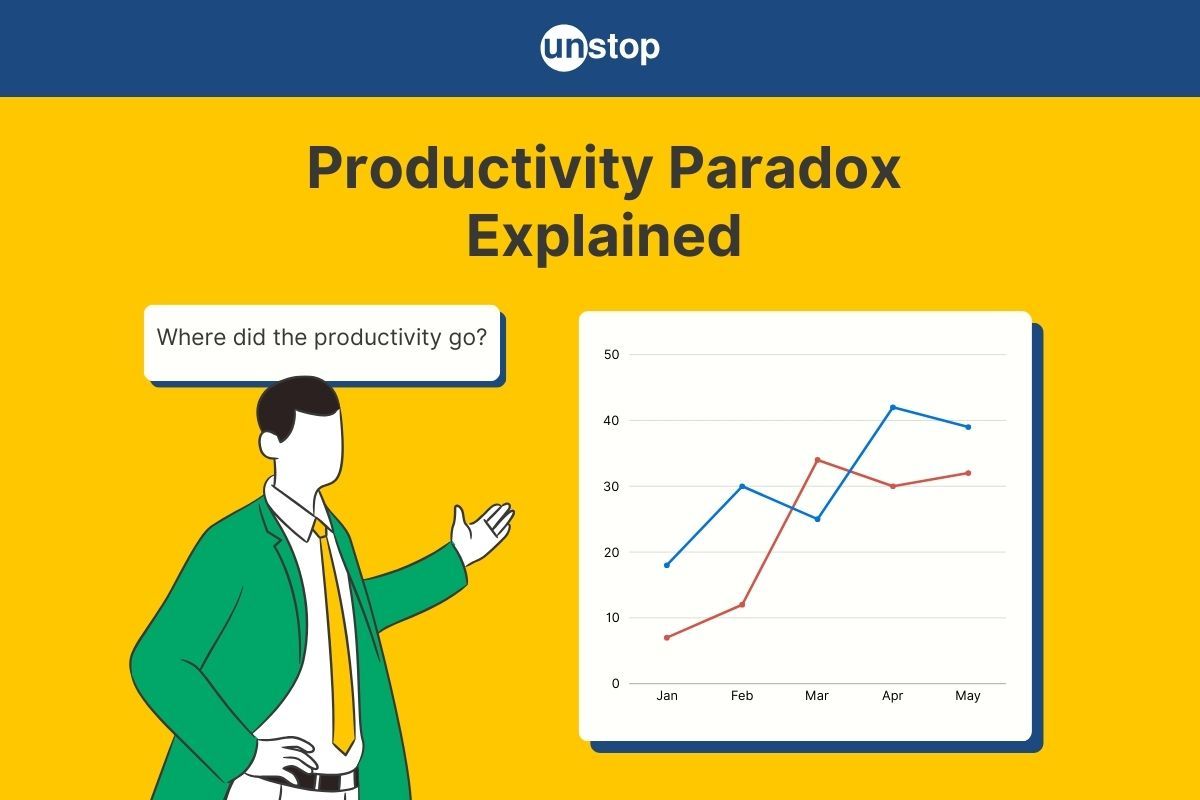
The productivity paradox at work is puzzling. Despite advanced tools and technologies, productivity often stagnates. This paradox creates stress and confusion for employees and managers alike. Understanding its roots can help unlock true efficiency.
Dive into the complexities behind this phenomenon and discover practical solutions to boost workplace productivity.
Exploring the Productivity Paradox
Definition
The productivity paradox refers to the situation where increased investment in information technology (IT) does not lead to expected productivity gains. It was first observed in the workplace during the late 20th century.
Historical Context
During the 1970s to early 1990s, businesses invested heavily in IT. Despite this, worker productivity did not increase as expected. This period is often called the 1980s productivity paradox. Companies spent billions on computers and software, yet overall productivity growth remained weak.
Nobel Prize-winning economist Robert Solow famously remarked in 1987, "You can see the computer age everywhere but in the productivity statistics."
This highlights the disparity between expected and actual returns on IT investments. For this reason, the productivity paradox is also referred to as the Solow Paradox.
A Stanford research paper, The IT Productivity Paradox, provides empirical evidence for the productivity paradox.
"Before investment in IT became widespread, the expected return on investment in terms of productivity was 3-4%. This average rate developed from the mechanization/automation of the farm and factory sectors. With IT, though, the normal return on investment was only 1% from the 1970s to the early 1990s.” - Stanford Research
What happened to the expected productivity?
The gap between productivity expectations and reality puzzled many experts. While companies anticipated significant gains from new technologies, apparent productivity did not reflect these investments. This led to further research into why these productivity payoffs were not materializing.
Several factors contributed to the paradox. These include:
- Mismanagement of IT resources
- Inadequate training for employees
- Resistance to change within organizations
Understanding the Impact of Solow Paradox
Economic Implications
The Solow Paradox had significant implications for economic theories. It challenged the assumption that technological advancements directly boost productivity. Economists had to reconsider how they measured productivity and economic growth.
Business Strategies
Businesses also felt the impact of the Solow Paradox. Companies needed to rethink their strategies around IT investments. Initially, many believed that simply acquiring new technology would improve efficiency. The paradox forced them to focus on how they used technology.
Long-term Effects
Over time, the effects of IT on productivity became clearer. By the early 2000s, businesses started seeing gains from their investments. They learned that effective integration of technology was key to realizing productivity improvements.
Productivity Paradox: Why it Matters for Recruiters & HRs
The productivity paradox matters for recruiters and HR in a few key ways:
- Misguided Hiring: Focusing solely on technology as a solution to productivity issues can lead to misplaced emphasis on technical skills during recruitment. Recruiters might prioritize finding candidates who can operate new software instead of seeking well-rounded individuals with strong problem-solving, communication, and critical thinking skills – abilities that are crucial for maximizing the benefits of technology in the workplace.
- Unrealistic Expectations: HR may set unrealistic performance expectations if they believe technology automatically translates to increased output. It's important to understand that successful technology adoption requires adjustments to workflows, training for employees, and a focus on optimizing work processes – not just hiring for technical expertise.
- Employee Disengagement: Over-reliance on technology can lead to employee burnout and disengagement. Recruiters and HR need to create a work environment that fosters collaboration, communication, and a sense of purpose – aspects that technology cannot entirely replace.
- Identifying the Right Skills: Understanding the productivity paradox helps recruiters and HR focus on finding candidates who can thrive in a technology-driven work environment. This means prioritizing skills like adaptability, creativity, and the ability to learn new things – qualities that are crucial for navigating technological changes and maximizing their impact on productivity.
By understanding the limitations of technology and the importance of human capital, recruiters and HR can develop a more holistic approach to building a high-performing workforce in the age of automation.
Identifying Causes and Challenges
Measurement Issues
One theory suggests that measurement issues cause the productivity paradox. Traditional metrics may not capture the full benefits of IT investments. For example, GDP might miss improvements in service quality or customer satisfaction.
Lag Time for Gains
Another explanation is the lag time for productivity gains. Businesses may need years to see returns on IT investments. This delay can make it seem like technology isn't improving productivity immediately.
Strategic Use
Simply investing in IT doesn't guarantee increased productivity. Companies need to effectively integrate technology into work processes and train employees to use it efficiently.
Strategic use of IT is crucial. Companies must align their investments with business goals. Misalignment often leads to wasted resources and minimal productivity improvements.
Focus on Short-Term Gains
Companies might prioritize short-term cost savings through IT (e.g., job cuts) over long-term investments in employee training and process improvement.
The paradox doesn't negate the potential benefits of IT.
Technology can significantly improve efficiency, communication, and innovation in the workplace. However, it's crucial to implement IT strategically and consider factors like human capital, process optimization, and a long-term perspective to truly unlock its potential for productivity gains.
Recent studies show a shift in perspective. Research from the 1990s indicated mixed results for IT-heavy investments. However, newer studies reveal significant productivity increases in companies that strategically use technology.
Strategies for Enhancing Productivity
Strategic Advantage
Companies should focus on strategic competitive advantage rather than just increasing output. For example, adopting cloud computing can streamline operations. Future information technology investment needs careful planning to ensure it aligns with business goals.
Accurate Measurements
Accurately measuring productivity is crucial. Traditional metrics may not capture the qualitative benefits of IT investments. Various productivity measures, such as employee satisfaction and innovation rates, provide a fuller picture. These metrics help assess the true impact of technological advancements.
Employee Training
Training employees is essential for leveraging IT tools effectively. Well-trained staff can utilize software and systems more efficiently. This leads to both individual and organizational productivity gains. Regular training programs should be implemented to keep skills updated.
Focused Programs
Productivity programs should have clear objectives. Setting specific goals helps track progress and identify areas needing improvement. Programs might include time management workshops or process optimization initiatives. These efforts contribute to overall productivity increases.
Organizational Culture
A supportive organizational culture enhances productivity. Encouraging collaboration and open communication fosters a productive environment. Recognizing and rewarding employee contributions also boosts morale and engagement.
Long-term Perspective (Stages of Paradox)
Adopting a long-term perspective on IT investments is crucial. Immediate returns are rare. Productivity gains often appear after several years. Research by economists Erik Brynjolfsson, Adam Saunders, and others has shown that the benefits of IT investments can take time to materialize.
Understanding the stages of the productivity paradox helps companies make better IT investments. Initially, there might be a lag between investment and return. This period can cause doubt about the value of new technologies. Companies need to recognize this lag as part of the process. By doing so, they can avoid hasty decisions to abandon new systems.
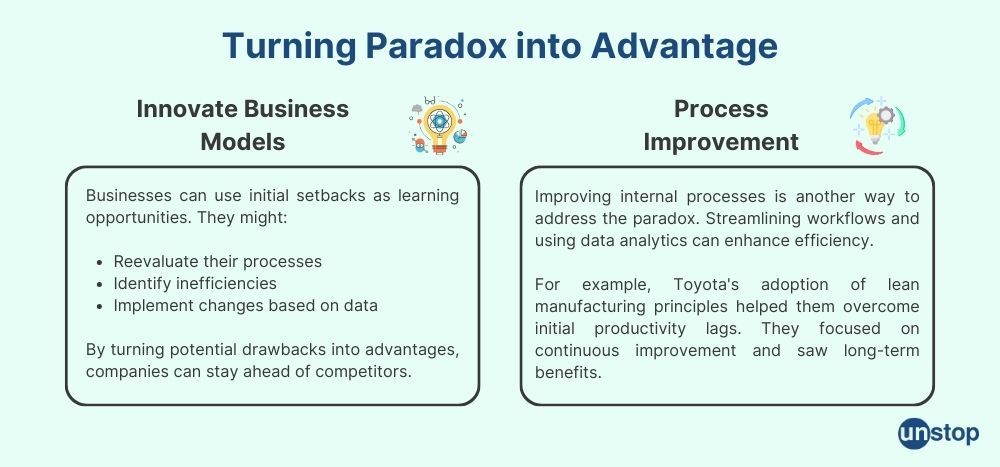
AI & the Modern-Day Productivity Paradox
The productivity paradox is a concern with the rise of Artificial Intelligence (AI) as well. While AI has the potential to revolutionize many industries and automate tasks, there's limited evidence yet of a clear and widespread productivity boost at the national or organizational level.
Just like with the rise of computers in the 1970s and 80s, the adoption of AI hasn't necessarily translated into a dramatic increase in overall productivity as some initially predicted. Several factors might contribute to this, similar to the reasons behind the historical productivity paradox:
- Measurement Issues: Accurately measuring the impact of AI on knowledge work and complex tasks can be challenging. Traditional metrics might not fully capture the benefits.
- Implementation Lag: Effectively integrating AI into workflows and training employees to utilize it takes time. Early adopters might experience disruption before reaping the benefits.
- Focus on Short-Term Gains: Organizations might prioritize cost savings from AI (e.g., job automation) over investing in employee training and process optimization for long-term productivity
Research by organizations like the MIT Initiative on the Digital Economy and the National Bureau of Economic Research explores the phenomenon and its potential application to AI.
The MIT research emphasizes the need to consider implementation lags.
- AI requires integration into workflows, employee training, and cultural change within organizations – all factors that can delay the realization of productivity gains.
- The study concludes by calling for a focus on complementary innovations alongside AI. Simply implementing AI might not be enough. Optimizing processes, fostering collaboration, and focusing on upskilling employees are crucial for maximizing AI's impact.
The research by the National Bureau argues that the most impressive capabilities of AI (those based on machine learning) are still being diffused and haven't reached widespread adoption.
The study concludes that the full effects of AI on productivity might not be realized until these capabilities are more widely implemented and combined with complementary innovations in work practices and organizational structures.
While the productivity paradox exists with AI, it doesn't negate its potential benefits. As AI technology matures, implementation strategies improve, and organizations focus on long-term value creation, we might see a future where AI truly unlocks significant productivity gains.
Beyond Technology: Building a Productive Workforce
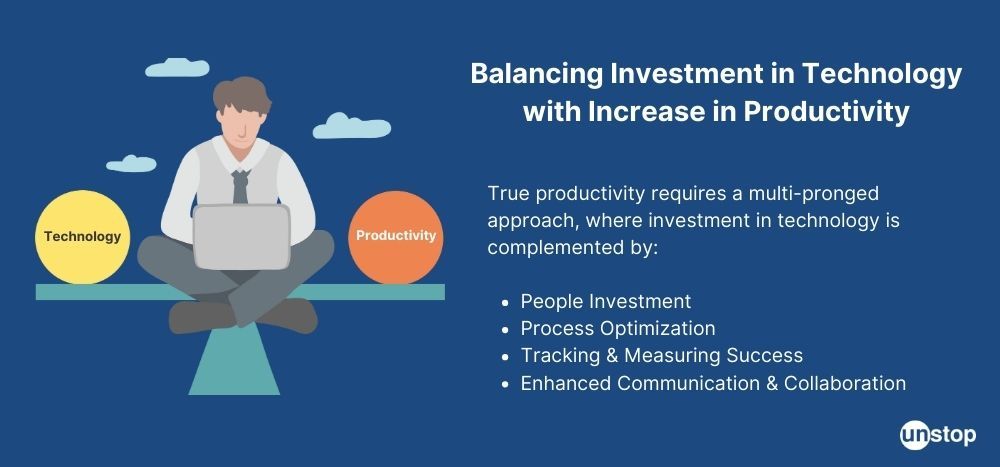
While technology holds immense potential for improving efficiency and streamlining work, it's not a silver bullet for boosting productivity. True and sustainable gains come from a multi-pronged approach that complements technology with a focus on people, processes, communication, and measurement.
Invest in Your People
- Recruiting for Talent & Fit: Go beyond technical skills. Prioritize attracting and hiring individuals with strong problem-solving, critical thinking, and communication abilities. Look for cultural fit to ensure new hires can thrive within your organization's environment.
- Employee Development: Invest in ongoing training and development programs that equip employees with the skills they need to adapt to new technologies and work effectively in a changing environment.
- Employee Well-being: Prioritize employee well-being by fostering a work-life balance, offering mental health resources, and creating a positive and supportive work culture. Happy and healthy employees are more engaged and productive.
Optimize Your Processes
- Streamline Workflows: Identify and eliminate redundant tasks to reduce wasted time and effort. Optimize workflows for maximum efficiency and clarity.
- Leverage Technology for Automation: Use technology strategically to automate administrative tasks like data entry, scheduling, and report generation. This frees up valuable employee time for more strategic work.
- Embrace Flexibility: Create flexible work arrangements and remote work options where possible. This empowers employees and can lead to increased productivity and satisfaction.
Foster Communication & Collaboration
- Open Communication Channels: Encourage open and transparent communication between all levels of the organization. This fosters trust, collaboration, and a sense of shared purpose.
- Teamwork & Collaboration: Promote teamwork and collaboration by creating clear communication channels, providing opportunities for knowledge sharing, and utilizing technology to facilitate seamless collaboration (e.g., project management platforms, communication tools).
- Embrace Diversity: Build a diverse and inclusive workforce. Diverse teams bring a wider range of perspectives and ideas, leading to more creative solutions and improved problem-solving.
Track & Measure for Success
- Metrics Beyond Output: Go beyond simply measuring output. Track relevant metrics like employee engagement, customer satisfaction, and the quality of work produced. This provides a more holistic view of productivity and helps identify areas for improvement.
- Data-Driven Decisions: Use data collected from metrics to make informed decisions about improving work practices, technology adoption, and employee development. This ensures your approach is data-driven and leads to sustainable productivity gains.
By focusing on these areas alongside technology, organizations can build a thriving workforce that is engaged, adaptable, and equipped to unlock the true potential of technology for lasting productivity improvements. Remember, technology is a powerful tool, but it's the talent, well-being, and collaborative spirit of your people that will ultimately drive success.
Summary
You’ve delved into the productivity paradox and dissected its complexities. From Solow's observations to modern-day challenges, you've gained a comprehensive understanding of why more technology doesn't always mean more productivity. You've also explored actionable strategies to turn this paradox into an advantage.
Now, it's your turn to act. Implement these insights to boost your workplace efficiency. Share your experiences and learn from others. Stay curious, keep experimenting, and never stop optimizing. Your journey to overcoming the productivity paradox starts now. What will you do next?
Frequently Asked Questions
1. What is the productivity paradox?
The productivity paradox refers to the observation that increased investment in information technology does not always lead to expected gains in productivity.
2. How does the Solow Paradox relate to productivity?
The Solow Paradox, named after economist Robert Solow, highlights the discrepancy between technological advancements and stagnant productivity growth.
3. What are the common causes of the productivity paradox?
Common causes include inefficient use of technology, lack of employee training, and resistance to change within organizations.
4. What challenges do businesses face with the productivity paradox?
Businesses often struggle with integrating new technologies, managing change, and aligning IT investments with business goals.
5. How can companies enhance productivity despite the paradox?
Companies can enhance productivity by investing in employee training, optimizing processes, and leveraging data analytics for better decision-making.
6. What strategies help turn the productivity paradox into an advantage?
Strategies include fostering a culture of innovation, continuous improvement, and aligning technology with strategic business objectives.
7. Why is understanding the productivity paradox important for businesses?
Understanding the productivity paradox helps businesses make informed decisions about technology investments and improve overall efficiency.
Suggested Reads:
I’m a reader first and a writer second, constantly diving into the world of content. If I’m not writing or reading, I like watching movies and dreaming of a life by the beach.
Login to continue reading
And access exclusive content, personalized recommendations, and career-boosting opportunities.
Subscribe
to our newsletter
Blogs you need to hog!
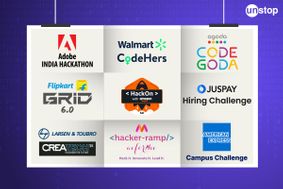
Organize Hackathons: The Ultimate Playbook With Past Case Studies

What is Campus Recruitment? How To Tap The Untapped Talent?
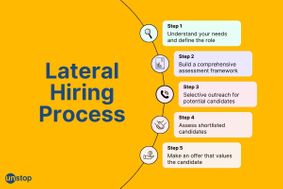
Lateral Hiring: A Complete Guide To The Process, Its Benefits, Challenges & Best Practices
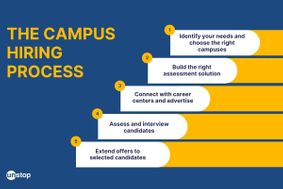












Comments
Add comment